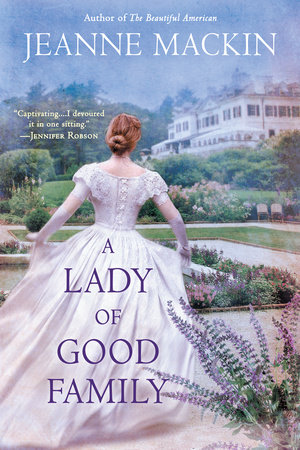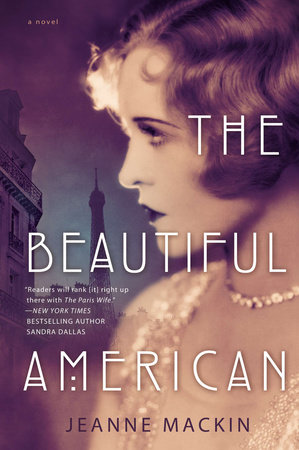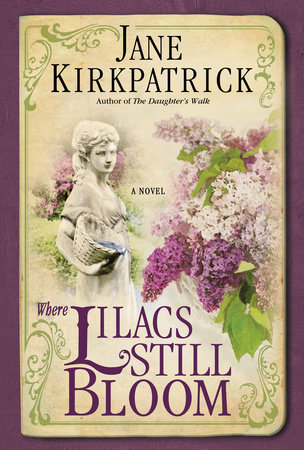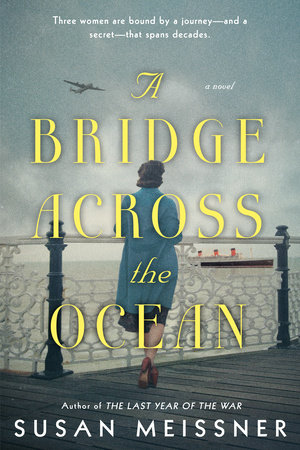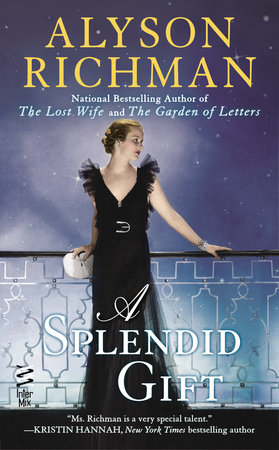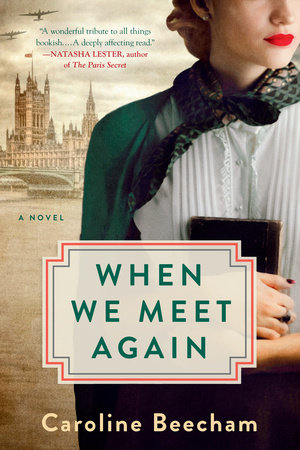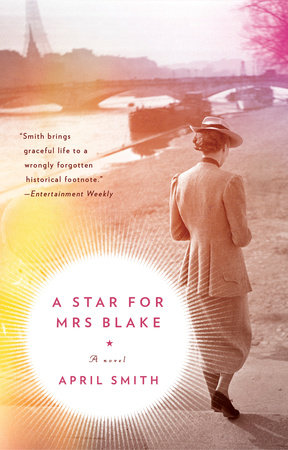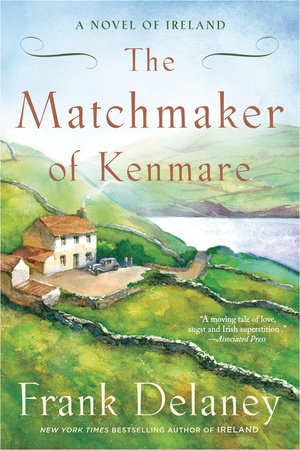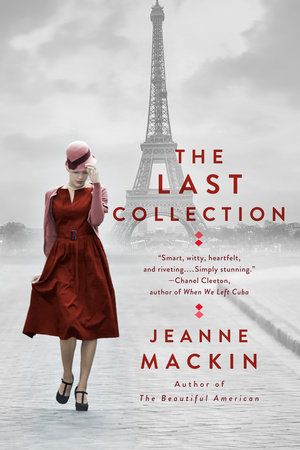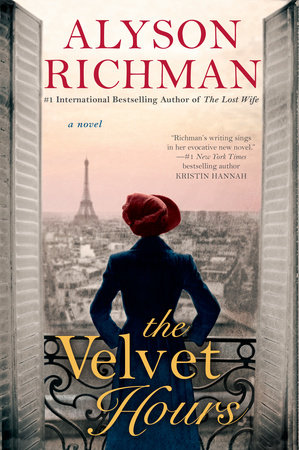Author Q&A
Spoiler Alert: A Conversation with Jeanne Mackin that follows tells more about what happens in the book than you might want to know until you read it.
Q. Which interested you more about Beatrix Farrand—her passion for gardens or her connection to writer Edith Wharton?
A. The two worked together for me. The bond between Beatrix and Edith, aside from family kinship, was that they both loved gardens. In fact, Edith used to call her writing time her “secret garden,” and when she decided to build her home at the Mount, the garden was one of her primary concerns and delights. It made such a strong impression on me that Edith Wharton’s niece became one of our country’s most famous garden designers.
Edith and Beatrix didn’t always agree on gardens and their designs: Edith favored a more classical, European approach. Beatrix had a strong sense of place, and she thought gardens in America should reflect that sense of place. Perhaps the two women helped balance each other’s proclivities and provide a sounding board for their ideas.
I am myself a passionate gardener, have been since I moved to the house I now live in, more than thirty years ago, so I understand that twitching in the thumbs that gardeners feel when they see a weed and want to pull it, even in someone else’s garden. It’s as automatic a response as brushing lint off your darling’s jacket before he goes out, and it’s a response I believe Beatrix would have had. And, as a writer, I am a great admirer of Edith Wharton’s work, in fact am more in awe of her than I am of Henry James’ novels, so I very much appreciated the time I spent rereading some of her work in order to also understand Beatrix. They were both groundbreakers but also very much women of their time.
If Beatrix hadn’t been related to Edith, I’d still want to write about her and her passion and her gardens. She was a fascinating person and she made gorgeous gardens.
Q. In A Lady of Good Family you focus on a small part of Beatrix’s life rather than covering a major portion of it. Can you tell us more about the genesis of the novel?
A. When I finished college, I packed a knapsack and spent a year traveling in Europe and some of the Middle East. It wasn’t the grand tour that earlier generations made; it was hitchhiking and hostels. In some ways that wanderyear was more important to my education than what I received in formal classrooms. The impressions were so strong and memorable: the taste of autumn beer in Germany, spicy with herbs; the heat of the Sahara; the colored light streaming through rose windows in French cathedrals. When we travel, our senses are more alert, and our memories more ready to hold impressions. At least that is so for me.
So when I knew I wanted to write a novel about Beatrix, I decided to begin it with her travels and some of her impressions: the information she took back with her to New York and Maine as she began her professional life. I wanted to choose a particular moment and place—that accidental meeting with Amerigo in the Borghese gardens—and make that the beginning of an arc that wasn’t a full life story, but a story about how she became a professional gardener.
Q. The epigraph—“One felt more and more that some moonlight nights in May . . . the ghosts of the people who once lived there must come back”—suggests why you wrote the novel as not just a love story but also a ghost story. Care to elaborate?
A. Gardens are such haunted places! Some of my earliest memories are of my grandmother’s garden behind her house on Elisha Street, in Waterloo, New York. I still dream about that garden, and when I began planting mine I realized, one day, that I was more or less trying to re-create her garden, to get back to that place and to those people, many long dead. Sit in a garden, any garden, and you can’t help but feel the presence of the other people, dead and alive, who may have sat in the garden.
Gardens are mystical places, part natural and wild, full of green and growth, and part manufactured and artificial, in the true meaning of the word, with laid paths, wooden benches, and terra-cotta pots. The old Celts believed that whenever there was an important transition and overlap—when day meets night, or when one season gives way to another—that’s when magic happens and doors open into other worlds. In a garden, wild meets cultivated, nature meets human made, so a garden, for me, has always been one of those transitional places, where magic comes alive and mystery abides.
And isn’t lost love always a kind of ghost story? The lover may be nowhere around, and yet he’s always with you in some sense. Ghost stories are about loss and regret and failure; hauntings are about unfinished business.
I love ghost stories, and so did many people of Edith’s generation. She herself wrote several and they are my favorites, especially one called “Afterward,” which was another touchstone for this novel. And of course there’s Henry James’ The Turn of the Screw, one of the greatest haunting stories ever. It made sense, when I was writing about gardens and those characters, that a ghost would also emerge.
When I found Beatrix’s quote that opens the novel, I was ecstatic.
Q. The novel contains obvious references to two Henry James novels—Daisy Miller and The Turn of the Screw—and to Edith Wharton’s The House of Mirth. Why was it important to you to explore and echo these writers’ work?
A. I was never satisfied with the way Henry James ended Daisy Miller, by simply killing her off, especially after I researched malaria in nineteenth-century Rome and discovered it was becoming less common and less likely to be fatal.
Daisy, as James created her, is a great character, all innocence and feistiness. She is full of potential, as we say now, and I wanted to explore her potential, to take her places James did not. When he wrote his play version of Daisy Miller, Daisy and Winterbourne (I changed his name to Winters) actually have a happy ending, but James ends the play quickly, with the embrace of the two lovers. I wanted to pursue the story, test Daisy with problems and difficulties, and see what kind of woman she would grow into.
Daisy Miller and Lily Bart from The House of Mirth have much in common: they are both social outsiders, both on the lookout for advancement, both aware of the limitations their culture places on them, but hopeful that they can avoid those limitations. When I reread The House of Mirth, I found some two dozen places in the text where marriage is referred to as a financial transaction, and a woman, the potential bride, is a “good” or “product” to be sold or at least exchanged. John Galsworthy’s novel The Man of Property is my third touchstone for this concept: the property referred to in the title is not just the Forsyte wealth, but the Forsyte wife. She is her husband’s property.
As for The Turn of the Screw, it is one of my favorite novels. When Henry James wrote or talked about this novel, he said that the evil was in the reader’s mind, not in the story itself, so we all become coconspirators with the governess when we read this story. Do the ghosts really exist or are they the result of a fevered imagination? It is the question that every good ghost story needs to ask.
Q. It’s tempting to be drawn to the wealth and glamour of New York’s “aristocracy” during what came to be known as the Gilded Age, until we’re reminded of the social restrictions they lived under. Especially shocking is the male attitude that he could do what he wanted—even drive his family into financial ruin—and his wife had no right to question his actions. What was life really like for these families?
A. Divorce, for any reason, was a terrible scandal and almost always seen as a failure on the wife’s part. Wives, happily married or not, were expected to endure, to simply look the other way, to cope. A man’s home was his castle, and he ruled that empire. If a woman married unwisely, that is, to a man with bad habits such as gambling, visiting prostitutes, keeping a mistress, or conducting blatantly illegal business deals, the wife suffered the consequences along with the husband, although she had no say in the activities.
The law made wives subordinate to husbands, making women legally little more than children themselves. Once women married, they had no say over their own bodies (rape within marriage wasn’t recognized as a legal possibility until recently) and no say over their children: the father was the authority, and if a couple did divorce, the father, not the mother, had the right to keep the children.
Do you see why mothers made such a to-do over whom their daughters married, and why?
It was a little different, perhaps a little easier, for the wealthy. Money is a form of power, and if a woman had money of her own, as Edith Wharton did from her writing and a family inheritance, she had more say over her own life. Being divorced and penniless could mean starving on the streets; being divorced and well-off with your own income meant having to survive gossip and harsh judgment from others—it wasn’t life threatening.
Q. The novel continually compares the Old World of Europe with the New World of America, and specifically of New York City. Can you expand upon the differences between the two in the years preceding the First World War? How did the war change that?
A. Europe, the Old World, had—still has in most places—the aura of long history and culture. In Rome, for instance, some of the buildings have foundations that date back to the Roman Empire; new apartment buildings lean up against Roman amphitheaters and medieval churches. When you walk in cities like Rome and Paris, you walk through centuries and centuries of history and art.
New York in the eighteenth century was still a village of wooden houses and Native American footpaths turned into mud roads; by the nineteenth century the city had grown tremendously, and by Beatrix’s childhood there were the wide avenues, the stone mansions, the new hotels and department stores that came to define New York, as well as the downside of quick growth and unequal wealth: the tenements, the homeless. By 1913, New York Harbor was the world’s busiest port, even more important than London’s. The New World represented energy and speed and optimism for the future.
Still, when people wanted “culture,” they looked to the Old World, to the art and the museums, and they traveled there. That was the point of the grand tour, to acquire that sense of history and art and culture still based in the Old World. Remember, the Metropolitan Museum of Art in New York didn’t open its doors until 1870!
Artists like Henry James had a perplexing relationship with their native country, admiring America for its energy and novelty and opportunities, yet choosing to live in what they perceived as the more cultured Old World. James settled in England, Edith Wharton in France. It’s revealing that when Henry James wrote the happy ending for the play version of Daisy Miller, the last thing that Daisy and Winterbourne say is that they are going home to America to be married. “Oh, yes; you ought to go home!” Daisy says. Yet James did not.
After the First World War, New York and the other American cities became even more important. We won the war without suffering damage to our own infrastructure; we moved forward even faster than before. There were important societal changes: women who had done war work outside the home, replacing male labor, were not always happy about being sent back to the nursery and kitchen. And many servants who had gone to offices and factories were even less eager to return to stables and sculleries to work. There was a large shift in labor from servants to employees. While the rich will always have their maids and assistants and private chefs, the middle class had to become much more resilient and self-sufficient. Daisy learns to pack lightly and carry her own bags.
Q. Can you expand upon the many changes in attitude and opportunity that women increasingly enjoyed in the twentieth century? When did laws regarding marriage begin to alter, and when did women really get the vote?
A. Marriage and attitudes about divorce changed drastically in the 1960s, with no-fault divorce. Before that, when couples wanted to divorce, either the husband or wife had to prove that the other spouse had committed adultery, deserted the family, or been violently cruel. That’s why divorce was such a scandal: it meant either that the wife had been a sinful, deceitful person or that she had been a victim of some terrible action.
A hundred years before no-fault divorce, in the mid-nineteenth century, laws and attitudes about marriage and divorce began a slow, important change. Property rights and other rights of married women were decided by the states rather than by the federal government, and varied greatly. In New York State in 1845, the legislature established that working married women could keep their salaries—before that, any income they earned became the property of their husbands.
The Married Women’s Property Act of 1848 further altered the law regarding the property rights of married women, saying that a wife’s property kept in her own name couldn’t be sold without her approval or used without her permission to pay her husband’s debts. That’s why Daisy wants to put the New York house in her own name, once she realizes how dangerous her husband’s gambling impulse has become.
The decision to allow women to vote was made on a state-by-state basis. The Fourteenth Amendment, of 1868, said that the right to vote “shall not be denied or abridged . . . on account of sex,” yet not all states immediately agreed, so the Nineteenth Amendment was introduced in 1878 . . . and debated for the next forty years! During those years, the women’s rights movement grew ever stronger and more politically savvy, thanks to leaders like Alice Paul, who, with other members of the National Woman’s Party, picketed the White House for the first time in history. During the First World War, women marched with posters saying, “How long must women wait for liberty?” They burned effigies of President Wilson; they went to prison; they went on hunger strikes.
The last state legislature needed to ratify the Nineteenth Amendment was Tennessee, and the deciding vote in favor was cast on August 18, 1920, by Harry Burn. Supposedly, his mother told him to be a good boy and vote “aye.” His mother should be canonized. What is discouraging is that Alice Paul and the other members of the NWP believed that once all states allowed women to vote, an Equal Rights Amendment would soon follow. We’re still waiting for that one!
Q. Women have always struggled with the age-old question of how to find fulfillment in both their personal and professional lives. Some readers might conclude from Beatrix’s example that achieving such a balance requires great wealth and a lack of children. Do you agree?
A. No, I don’t agree, or at least I don’t think that is how it should be. Let’s be honest, though. Enough money and freedom from duty to do as you please to build a career can’t hurt! Women and girls today might find it difficult to understand what married life was often like before birth control was readily available. Some women experienced one pregnancy after another, in fact, spent their entire premenopausal life in some stage of pregnancy and child rearing. It was their work, and it consumed their time and quite often killed them. The wealthy had nannies, nurses, and governesses to take care of child rearing, and I suspect they knew a little more about birth control than we give them credit for.
Today, women have more freedom and more choices. But achieving a balance, as you say, is a struggle. Fulfillment comes from doing what you love and being surrounded by people who respect your choices. It’s a day-to-day struggle, doing your work and also being available to family and friends. My one rule is this: never, never, ever call me in the morning when I’m working. I’ll hang up on you, if I answer the phone at all. I can’t write in bed like Edith did, though. I envy her that.
Q. Mrs. Haskett is a truly disagreeable woman, cruel and acquisitive. She seems to embody the negative aspects of the nouveau riche. Did you have a particular model in mind when you created her?
A. Thankfully no, if you’re referring to living people I know. I thought of Mrs. Haskett almost as a metaphor for the greed of the times, that “I have the money and I can buy whatever I want, whether you want to sell or not” attitude.
I love art museums second only to good libraries, and it pains me that so many collections were built on war, looting, and the rich buying from the newly poor. There is no way around this problem, however. How else can art be moved from private collections to public viewings? Henry James covered some of this territory in his novels, the rich Americans buying art off the impoverished Europeans.
As to Mrs. Haskett’s social ambitions for herself and her daughters, firm placement in the respectable upper classes, in her generation, was as important as money in the bank, as poor Lily Bart discovers. If you were rich enough, you could buy a title, an ancestral home, and all the toys and benefits that came with them. There’s a reason why it is called the Gilded Age and not the golden age. Gilding is a superficial layer that wears off in time. And it’s why, in the title, I refer to Beatrix as a lady. Breeding and a generosity of spirit, empathy, are deeper than gilding: they don’t wear off.
Q. Beatrix’s mother, Minnie, seems open-minded in her love for her daughter and willing to defy strict social convention to find meaningful work for herself. Can you tell us more about her? Was she warm and accessible with people outside her class? Were she and Beatrix able to remain close even as Beatrix’s career flourished, and following her marriage to Max Farrand?
A. Minnie (Mary) Jones was known for her warmth, wit, and intelligence. Henry James was a great admirer of her and a lifelong friend, so she must have been a wonderful conversationalist and a perceptive reader. She’s one of the people I’d love to invite to dinner and ask what she thinks of my own favorite books, and which of Edith’s books she most admires.
Aside from her intelligence and energy, Minnie was also a woman of great social conscience. She didn’t just give loose change to charity; she worked for the poor and for the working class. I suspect that her dedication to helping the less fortunate might have been one of the things that damaged her marriage: Freddie Jones was a son much loved and spoiled by his mother, and he expected a wife to be dedicated to his comfort, not to the well-being of others.
Beatrix and Minnie’s close and loving relationship wasn’t changed by Beatrix’s marriage, though the time they spent together was necessarily reduced. When the Great Depression arrived, Minnie was short of cash, and Beatrix did all she could to help her; Minnie often spent summers with Beatrix and Max in Bar Harbor.
One of the great sorrows of Beatrix’s life was that she wasn’t with Minnie when she died, at age eighty-four. Minnie had traveled again to Europe to see Edith, but caught a cold and the cold turned into pneumonia. She died before Beatrix could get there.
At the memorial for her mother in New York, Beatrix chose this beautiful passage from Proverbs to read: “A good name is rather to be chosen than great riches, and loving favour rather than silver and gold.”
Q. Can you tell us more about the projects Beatrix worked on after 1920, when the novel ends?
A. Dumbarton Oaks is the jewel in Beatrix’s crown, and visitors can still admire her work there, especially how she designed the gardens to suit the rocky, sloping grounds, letting the original shapes of the land guide her choices.
Beatrix was already fifty years old when she began her work at Dumbarton Oaks, a good age for remembering earlier days, and these gardens do reflect Beatrix’s earlier trips in Italy. There are references to Renaissance gardens and also to the American Arts and Crafts movement. The terraces function as outdoor rooms and courts leading into other outdoor rooms; there are fountains, pools, rose beds, sculptures, walks lined with flowering trees. There are places to be meditatively alone, places for talking with friends. The Dumbarton Oaks Gardens are absolutely magnificent.
Before, during, and after her years of work and maintenance at Dumbarton Oaks, Beatrix worked on some two hundred different projects: college campuses, private gardens, town gardens, village greens, memorials and memorial stones, including one for President Theodore Roosevelt in the Oyster Bay cemetery of Long Island, a rose garden for the New York Botanical Garden . . . the list is extensive and varied, showing Beatrix’s determination to bring green and growing beauty to as many settings and people as she could.
Beatrix’s other famous garden didn’t share as happy a fate as Dumbarton Oaks, however. After Beatrix and Max married, the couple spent a large part of every year in Bar Harbor and together created Reef Point Gardens: home, horticultural library, and botanic garden all at once, a place where Beatrix could showcase native American plants and provide educational resources for horticulturalists and gardeners. But after Max died in 1945, funding for Reef Point fell short of what was needed to maintain the extensive garden and library. Rather than let the house and garden dwindle into mediocrity, Beatrix had her childhood home torn down and the gardens dismantled.
I think that grim and mournful action testifies to the depth of her feeling both for her husband and for her mother: without them, the house no longer made sense. A friend bought the property to rebuild on; another friend purchased many of the plants and created two new gardens with them: the Asticou Azalea Garden and the Thuya Garden. There is a kind of eternity to gardens: they are rarely completely destroyed; they continue either in individual plants moved elsewhere or in suggestions of paths and walls, outlines.
Beatrix transferred her library and papers to the University of California at Berkeley and moved to a smaller cottage in Bar Harbor. She died there in 1959.
The Beatrix Farrand Society (www.beatrixfarrandsociety.org) lists thirteen gardens where her work can still be admired, including the Abby Aldrich Rockefeller Garden in Maine; the Beatrix Farrand Garden at Bellefield in Hyde Park, New York; the Peggy Rockefeller Rose Garden in the New York Botanical Gardens; and her most famous work, Dumbarton Oaks, Washington, D.C.
Q. Your novel The Beautiful American, published in the spring of 2014, received glowing reviews from print publications and from readers who posted comments online. Does anything about your experience in publishing that novel stand out?
A. Some wonderful comments: a male reader said it made him cry! Someone else said that when she finished it, she started it all over again. The response, in general, was really wonderful and very encouraging. The novel received the CNY Award in Fiction for 2014, and I was delighted about that. I’m a storyteller and I’m over the moon when people like the story and the way it is told. Some friends, though, thought that my portrayal of Picasso was much too kind. I had to explain that I was writing Picasso the way Nora, the narrator, would have perceived him, and Nora rather liked Picasso. He was kind to her, which is not the same as saying he was kind to all women. He wasn’t. He was, we all know, a bit of a rascal.
Q. Since you liked this question last time, I’ll ask it again. Where do you keep the pile of books you’re reading and what’s in it these days?
A. Ah. I have a new system. I placed a bookcase on top of my desk, not beside it, so all I have to do is look up from my typing and there they are, all the titles I need for reference and inspiration. I just hope the legs of my desk are really, really strong.
I also have a nightstand with very strong legs and lots of books on it. The desktop books are mostly research for the novel, along with the novels of Edith and Henry, and several histories of gardening. The nightstand books are my distraction reading: I believe in the Zen theory that sometimes to hit the target you have to look away from it, so during my research and writing I also read lots of books that had nothing to do with Beatrix and gardens. A few that stand out: Shakespeare’s Pub, by Pete Brown, a really fine history of the George Inn in London. Sounds starchy, but believe me, it isn’t. Wild, by Cheryl Strayed, was a great read and thoroughly convinced me I’m not the extreme-hiker type. Marina Warner’s Once Upon a Time is a fascinating new look at fairy tales, and my reading group devoured the Old Filth trilogy by Jane Gardam. I reread The Pursuit of Love by Jessica Mitford for perhaps the thirty-second time.
Q. Do you find new electronic devices changing the way you read? Do research?
A. Not the way I read. I still prefer the old-fashioned paper-between-boards kind of reading experience. I remember one day when my computer had gone all squirrelly and my husband’s had as well. I was weeping and wailing and he picked up a book and said, “Look! This is perfect technology! Portable, no power source needed and no software.” That’s how I still feel about books. I admit, though, that being able to carry around an entire library in your handbag is beginning to sound appealing.
Research is a trickier question. I will use online databases for quick facts and fact-checking, but I still prefer volumes, actual books, for deeper research. For instance, for an earlier novel I read some twelve hundred pages of text (library books) to write a five-page scene about falconry. Mostly I still roam my various libraries, fingering actual books on actual shelves. If I ever come back as a ghost, I plan to haunt a particular library at Cornell, where I’ve done most of my research. It is a wonderful, fantastic place, as good as a garden, and I think I’ll make a decent ghost for it.
Q. Do you have a book that you’ve always wanted to write and haven’t written yet?
A. Yes. It’s . . . I can’t tell you. I’m superstitious about this. If I talk about a book before I begin it, the book doesn’t get finished. So, stay tuned!
